Bovine Lameness and Podiatry
Functional hoof trimming
G Cramer
A functional hoof trim is used to prevent and treat lameness in cattle. A functional hoof trim is designed to create a better walking surface by encouraging weight bearing on the toe and wall region, balancing the heels, and protecting the flexor tuberosity area.
Dairy cattle feet should typically be trimmed twice yearly. See more
Steps of a functional hoof trim
- Trim the medial hoof
- Trim the lateral hoof
- balance heels
- Modeling
- Treat lesions
- Remove loose horn
Kaltura version with captions: How to do Functional Trimming with knives
Key points
The hoof should be 3″ long in most cattle. Measure from the coronary band and trim off the excess hoof using nippers or other tools to create a cut perpendicular to the weight bearing surface. Trim bottom of foot to 1/4″ thickness, focusing on trimming the wall in the toe region.
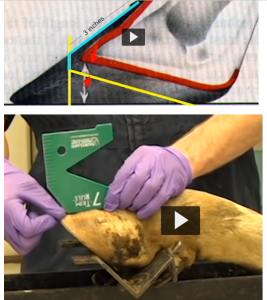
Ensure 3″ of weight bearing surface. Avoid trimming the medial heel and keep the bottom of the foot flat.
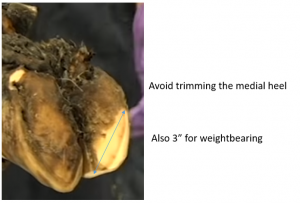
Repeat on the other side. Also trim the heel to ensure the heels are evenly weight bearing or the medial digit is slightly longer and actually bears more weight.
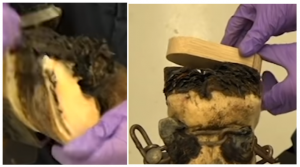
Model the toe to remove weight from under the flexor tuberosity in order to prevent sole ulcers.
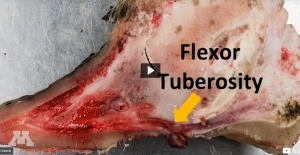
Remove horn over the flexor tuberosity aggressively from the lateral digit and slightly from the medial digit to create a space between them. Avoid the toe triangles.
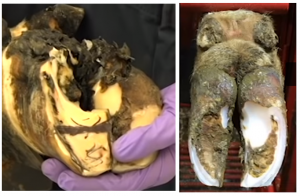
Stop here in a healthy foot.
To treat this sole ulcer, the foot is trimmed so the area around the sole ulcer isn’t weight bearing. The horn can be removed in the heel region until the area is indentable with finger pressure. Then the loose horn around the ulcer is carefully removed so it doesn’t trap manure or bacteria.
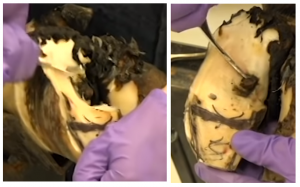
Remove the loose heel horn to minimize the crevices and the anaerobic environment that would make it a good environment for digital dermatitis. Keep the medial heel as long as possible if you are trying to protect the lateral digit. Keep it weight bearing.
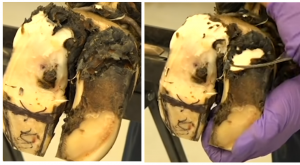
For damaged feet
- remove loose and undermined hoof horn
- pare away to create smooth surfaces that won’t trap debris
- remove all unhealthy horn but stop if you get bleeding
- adjust weight bearing on damaged digits
- pare the damaged digit lower to minimize weight bearing on it
Key Takeaways
A functional hoof trim is designed to create a better walking surface by encouraging weight bearing on the toe and wall region, balancing the heels, and protecting the flexor tuberosity area. Functional hoof trims help prevent sole ulcers and white line disease.
The goal of the trim is to make sure the cow’s hoof is three inches long and has a flat bottom with three inches of weight-bearing surface. We want to avoid trimming the medial heel and keep the bottom of the foot flat. We also trim the heel to make sure that it’s evenly weight-bearing and doesn’t cause any problems.
Overall goals for treatment trims:
- Remove loose and undermined digit horn
- Adjust weight bearing on damaged digits
Most dairy cattle should be trimmed twice yearly or prior to drying off and if signs of lameness
Resources
Components of a hoof trimming program in cattle, Cramer and Solano, merckvetmanual.com
A Review of the Relationship Between Hoof Trimming and Dairy Cattle Welfare, VCNA FA 2017; Volume 33, Issue 2, July 2017, Pages 365-375
If you don’t have a trimming chute
Kaltura version with captions: Highlander Casting… No, Not Christopher Lambert!

